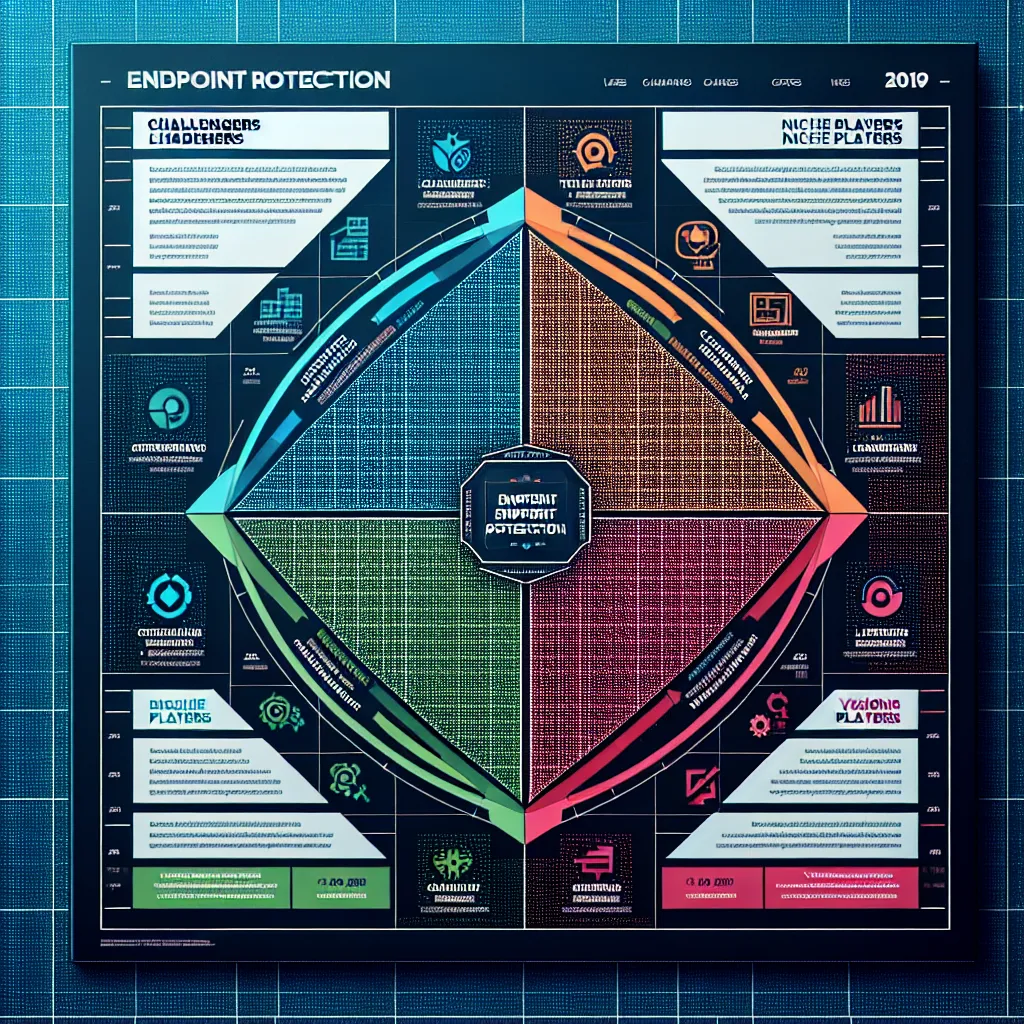Gartner Magic Quadrant for Endpoint Protection 2019
Gartner Magic Quadrant for Endpoint Protection 2019
The Gartner Magic Quadrant for Endpoint Protection is a comprehensive report that evaluates and ranks various endpoint protection platforms based on their completeness of vision and ability to execute. In this article, we will delve into the latest edition of the Gartner Magic Quadrant for Endpoint Protection in 2019, exploring the key findings, top vendors, and emerging trends in the industry.
Introduction to Endpoint Protection
Endpoint protection refers to the security measures taken to safeguard endpoints, which are the devices used by end-users to access the network. These endpoints include desktop computers, laptops, smartphones, tablets, and servers. Endpoint protection aims to prevent unauthorized access, detect and block malicious activities, and ensure data security on these devices.
The endpoint protection market has witnessed significant growth in recent years due to the increasing number of cyber threats and the growing need for data protection across organizations. With the rise of sophisticated malware, ransomware, and other cyber-attacks, businesses are now more focused on strengthening their endpoint security strategies.
The Importance of Gartner Magic Quadrant
Gartner is a leading research and advisory company that provides valuable insights and analysis across various industries. The Gartner Magic Quadrant is a graphical representation of a market’s direction, maturity, and participants. It helps organizations understand the competitive landscape and make informed decisions when selecting vendors and solutions.
The Gartner Magic Quadrant for Endpoint Protection evaluates multiple vendors based on their ability to execute and completeness of vision. The ability to execute assesses the vendor’s product or service, overall viability, sales execution, market responsiveness, and customer experience. On the other hand, the completeness of vision measures the vendor’s strategy, innovation, and market understanding.
By analyzing the Gartner Magic Quadrant, businesses can gain insights into the strengths and weaknesses of different endpoint protection vendors. This information can be used to develop a shortlist of potential vendors for evaluation and selection.
Key Findings from the Gartner Magic Quadrant for Endpoint Protection 2019
The Gartner Magic Quadrant for Endpoint Protection 2019 highlighted several key findings that provide valuable insights into the current state of the market. Some of these findings include:
-
Endpoint Detection and Response (EDR) Integration:
Vendors are increasingly focusing on integrating EDR capabilities into their endpoint protection platforms. EDR allows for advanced threat detection, investigation, and response capabilities, providing enhanced security to organizations. -
Cloud-Based Endpoint Protection:
The adoption of cloud-based endpoint protection solutions is rapidly increasing. Cloud-based solutions provide scalability, flexibility, and centralized management, making them an attractive option for organizations. -
Artificial Intelligence and Machine Learning:
Vendors are leveraging artificial intelligence and machine learning technologies to improve threat detection and response. These technologies enable proactive threat hunting and automated incident response, reducing the risk of cyber-attacks. -
IoT Security:
With the proliferation of Internet of Things (IoT) devices, endpoint protection vendors are focusing on providing security solutions specifically designed for IoT endpoints. The Gartner Magic Quadrant highlighted the emergence of specialized IoT security vendors.
Top Vendors in the Gartner Magic Quadrant for Endpoint Protection 2019
The Gartner Magic Quadrant for Endpoint Protection identified several leading vendors in the market. These vendors were positioned in different quadrants based on their ability to execute and completeness of vision. Some of the top vendors include:
-
Symantec:
Symantec is a well-established player in the endpoint protection market. The company offers a comprehensive suite of endpoint security solutions, including advanced threat protection, EDR, and cloud-based security. -
McAfee:
McAfee is another prominent vendor, known for its robust endpoint protection solutions. The company provides a range of features, including anti-malware, data loss prevention, and application control. -
CrowdStrike:
CrowdStrike is a leading next-generation endpoint protection vendor. The company focuses on cloud-native solutions, leveraging AI and machine learning for real-time threat intelligence and response. -
Trend Micro:
Trend Micro offers a wide range of endpoint protection solutions, including behavior monitoring, file reputation, and vulnerability shielding. The company emphasizes cloud-based security and integrates EDR capabilities. -
Sophos:
Sophos is a global provider of endpoint protection solutions with a strong focus on next-generation technologies. The company offers a unified endpoint protection platform with features like advanced threat prevention, EDR, and machine learning-based malware detection.
Emerging Trends in Endpoint Protection
As the endpoint protection landscape continues to evolve, several emerging trends are shaping the industry. These trends are driven by technological advancements, evolving threat landscape, and changing business requirements. Some of the notable emerging trends include:
-
Zero Trust Security:
Zero trust security is an approach that assumes no user or device should be trusted by default. It requires continuous verification and authentication of users and devices, providing granular access controls and minimizing the risk of breaches. -
Integration with Security Orchestration, Automation, and Response (SOAR):
Endpoint protection solutions are increasingly integrating with SOAR platforms to provide automated incident response and streamline security operations. This integration enables faster detection, response, and remediation of threats. -
Endpoint Detection and Response (EDR) Expansion:
EDR capabilities are expanding beyond traditional endpoints to include IoT devices, mobile devices, and cloud workloads. This expansion aims to provide comprehensive visibility and protection across all endpoints in an organization. -
Managed Detection and Response (MDR):
Organizations are increasingly turning to managed detection and response services to enhance their endpoint security. MDR combines advanced threat detection technologies with human expertise, providing 24/7 monitoring and response capabilities.
Conclusion
The Gartner Magic Quadrant for Endpoint Protection 2019 offers valuable insights into the endpoint protection market, helping organizations make informed decisions when selecting vendors and solutions. The report highlights the key findings, top vendors, and emerging trends in the industry, providing a comprehensive overview of the current state of endpoint protection.
As cyber threats continue to evolve, organizations must prioritize their endpoint security strategies. By leveraging the insights from the Gartner Magic Quadrant and staying updated on the emerging trends, businesses can strengthen their endpoint protection and ensure the security of their valuable data.

